When we stroll into a movie theater, we're hunting for something more than just popcorn and a comfy seat. We're on a quest for new characters to explore—people with compelling life stories, turbulent love affairs, crushing tragedies, and spine-tingling horror. Sure, it feels phenomenal to walk in the shoes of these big-screen personalities, empathize with their struggles, and revel in their triumphs. And isn't it just heartwarming when the credits roll and all their problems are magically solved, leaving us with a grin that stretches ear to ear? Yet, let's not kid ourselves. It's equally natural to experience a guttural, deep-seated hatred for some characters. We're talking about those figures so exquisitely awful we can't help but relish our contempt for them. And let's not forget those who are just plain irritating, serving as mere speed bumps on the narrative highway. Now, you might be thinking—what makes a character so detestable? Well, the answer is a tangled web of poor choices, cringe-worthy dialogue, or simply existing in a way that throws a wrench in the storylines we hold dear. That's why we've taken the liberty of compiling a list of the top 10 most hated characters in film history. Trust us, these characters have left an impression alright—but it's far from favorable. So, let's dive in and examine these love-to-hate or hate-to-love figures that have seared themselves into cinema's collective conscience.
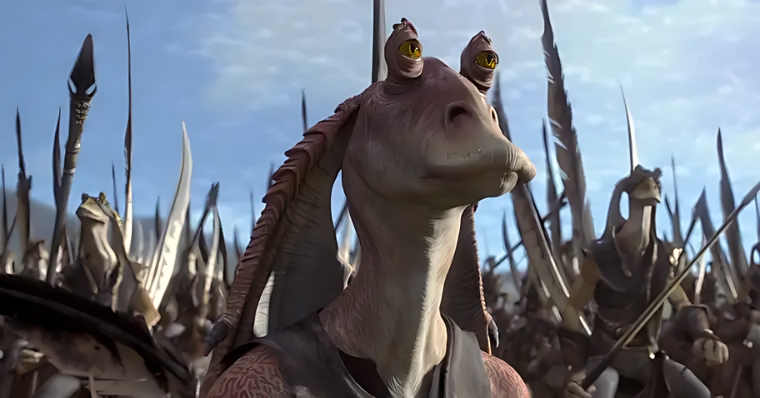
Jar Jar Binks (Star Wars)
Through the years and decades since its inception, the Star Wars universe has served as an intricate canvas for storytellers, brimming with characters who've become mainstays in pop culture. Now, in this kaleidoscope of heroes, villains, and creatures from galaxies far, far away, one divisive figure emerged with the launch of the Prequel Trilogy: none other than Jar Jar Binks. Introduced in "The Phantom Menace," this peculiar Gungan swiftly becomes an ally to Anakin Skywalker and Obi-Wan Kenobi and makes appearances throughout all three chapters of the saga. Theoretically, Jar Jar should be an adorable sidekick, providing comic relief amid interstellar politics and light-saber duels. Reality, however, had different plans. Instead of comic relief, he became a comic affliction, an entity so universally lambasted by fans that he almost drove his actor, Ahmed Best, to reconsider his career in showbiz altogether. Let's not mince words here. Jar Jar Binks has been the object of considerable scorn and debate within the fandom, and the critical backlash was so overwhelming that it could've powered a Death Star. The character has been criticized for everything from perceived racial stereotypes to simply being, for lack of a better word, annoying. To be fair, the creators aimed for an endearing klutz, a bumbling figure meant to engage younger audiences. But what they got was the equivalent of nails on a chalkboard for a good chunk of the Star Wars faithful. So why all the hullabaloo? Well, part of the issue lies in the tonal mismatch. While "The Phantom Menace" grapples with complex narratives of political intrigue, including a goofy character like Jar Jar felt incongruent, like trying to mix oil with water. Moreover, his role in the story was not trivial; his actions had a significant impact, which made his buffoonery all the more glaring. In short, Jar Jar Binks is one of those characters who lingers in the public imagination for all the wrong reasons. Though some argue his infamy has, in a way, made him iconic, he remains a subject of vigorous debate, and his existence is a perpetual itch that the fandom can't seem to scratch.

Commodus (Gladiator)
When Ridley Scott unleashed "Gladiator" on the world back in the year 2000, he wasn't just rolling the dice on another flick. No, he had his sights set on crafting a grand historical epic that would sear itself into the collective consciousness. Mission accomplished? Absolutely. But he didn't stop there. He also gave us a villain that we could categorically despise, one that wouldn't fade into the background noise of bad guys we've seen before. Enter Commodus, chillingly brought to life by Joaquin Phoenix in what has to be one of the most disturbing performances of his career. Now, for some context. Commodus is the son of Marcus Aurelius, and let me tell you, the apple falls so far from the tree, it's in another orchard entirely. This guy is spoiled rotten and absolutely drunk on power. Need evidence? How about the fact that he bumps off his own dad just to climb a rung or two on the political ladder? There's family drama, and then there's Commodus-level family drama. His moral compass isn't just broken; it's as if it never existed. This takes villainy to a whole new sphere, where the word "ruthless" would be a flattering adjective to describe him. His twisted machinations are aimed at annihilating anyone and everyone who stands in the way of his ascent to ultimate power. And who's the main roadblock on his twisted highway to domination? None other than our hero Maximus, depicted by the ever-so-capable Russell Crowe. Commodus and Maximus are a study in contrasts, and that's what makes their face-off so compelling. Maximus embodies honor and integrity, while Commodus is essentially a swirling vortex of egotism and malevolence. It's like watching a clash between a noble lion and a cunning snake—each powerful in their own right but representing polar opposite virtues and vices. In the annals of cinema, there are villains you forget and villains you remember, but then there are villains who transcend the screen to become cultural icons. Commodus, with his malevolent cunning and his ability to evoke raw hatred from the audience, firmly belongs in that last category. His character serves as a masterclass in screenwriting and acting—managing to make our skin crawl while still being so fascinating that you can't look away. That, my friends, is the power of a well-crafted villain in a Ridley Scott epic.
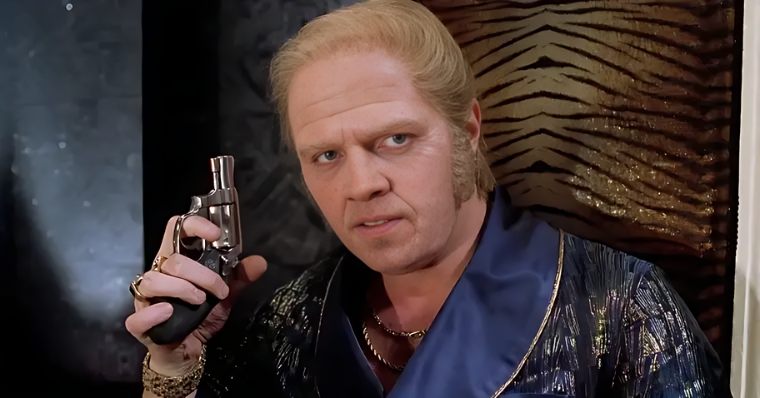
Biff Tannen (Back to the Future)
There's a secret joy we all experience when cinema's quintessential bullies get their just desserts. Whether it's poetic justice or flat-out revenge, we relish those moments. Now, let's talk about a case where we get to feast on that joy not just once, but multiple times. The bully in question? Biff Tannen, the human roadblock in Marty McFly's life, in the iconic "Back to the Future" series. This guy isn't just a thorn in Marty's side; he's the whole cactus. For those who need a refresher on why we love to hate this guy, Biff is essentially Marty McFly's dad's nemesis. Over the years, Biff has been exploiting George McFly's perceived "weakness" as if it were a free subscription to Easy Street Monthly. Now, you'd think the story ends when Marty McFly, our time-traveling protagonist, warps back to the past in the first film and, pardon my wording, mucks up the space-time continuum. Biff loses his swagger and his influence—essentially, he goes from kingpin to pauper. It's the schadenfreude moment you didn't know you needed until you saw it. And you might think, "Case closed, right?" Well, not so fast. In "Back to the Future: Part 2," Biff pulls a cosmic uno-reverse card. Lo and behold, it's revealed he's manipulated his own fate, morphing into a greasy, petty millionaire. This guy is like the Hydra of bullies; cut off one version and the other springs up, this time richer and more detestable than before. And then, as if morphing into a moneyed weasel weren't enough, the guy adds "murderer" to his repertoire. You can't make this stuff up, even if you tried. Here's the real kicker, though. What makes Biff so mesmerizingly appalling is his evolution—or perhaps devolution—across timelines. He's not a stagnant character by any means; he's this rollercoaster of villainy that careens through the series with unforeseeable twists. One moment he's a small-town bully, and the next, he's an affluent, moral black hole. In some eerie way, his multifaceted villainy represents our collective fears about the abuse of power and the potential dark paths people can walk when they let their vices guide them.
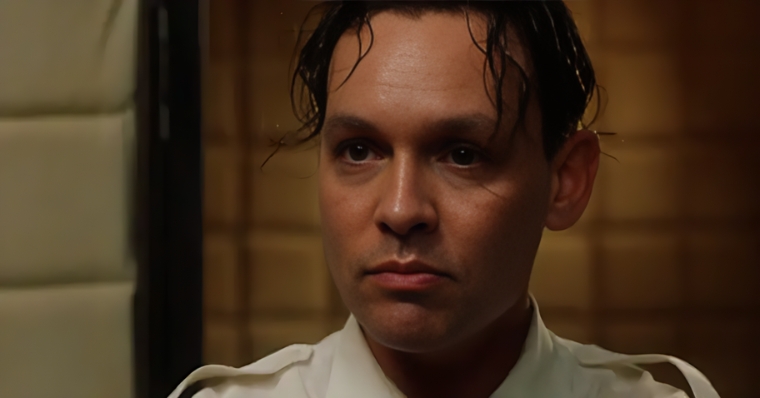
Percy Wetmore (The Green Mile)
Stephen King has gifted us with a cavalcade of villains so repugnant they make your skin crawl just reading about them. There's the unhinged Annie Wilkes in "Misery," religious zealot Margaret White in "Carrie," and the pure malevolence of Henry Bowers in "IT." But even within this macabre lineup, few induce a collective grimace quite like Percy Wetmore from "The Green Mile." This guy is a prison guard at Cold Mountain Penitentiary, which already creates an environment of inherent tension. But Percy elevates the role into an unparalleled exercise in malevolence. Imagine someone who gets to enforce rules but who also relishes the inherent power imbalance in a prison setting. Percy's an authority figure not just in rank but in disdain for human dignity, specifically that of the inmates who have the misfortune of crossing his path. He doesn't just look down on them; he treats them like they're a different, inferior species altogether. It's like he's got this internal "cruelty dial," and it's perpetually set to maximum. Take, for instance, the moment he kills a prisoner's pet mouse with a glee that borders on ecstatic. It's not just about exterminating a rodent; it's a symbolic stomping on the last remnants of compassion or happiness the inmate might have clung to. And just when you think that dial can't turn any further, Percy goes on to sabotage the electric chair for that very same prisoner, ensuring that the man's exit from this world is an excruciating spectacle. I mean, talk about a sadistic one-two punch. But what elevates Percy from a mere movie villain to a cultural touchstone of wickedness is the reaction he evokes from us, the audience. It's not mere loathing; it's a more nuanced form of dread, knowing that people like Percy actually exist and that the potential for such abhorrence lives in the shadows of society. What's troubling is his brand of evil is unembellished; it's not mythic or fantastical but deeply grounded in the cruelty that can emerge when a man in a position of authority loses all semblance of empathy or moral compass. And why does he loom so large in our collective villain Hall of Fame? Maybe it's because Percy Wetmore serves as a reflection, a stark and grim mirror of humanity's darker instincts. He represents not just the malevolence of one man but a sinister underbelly of human nature, lurking beneath the surface, waiting for the opportunity to spring forth.
 Nurse Ratched (One Flew Over the Cuckoo's Nest)
Nurse Ratched (One Flew Over the Cuckoo's Nest)
The 1975 cinematic masterpiece "One Flew Over the Cuckoo's Nest," adapted from Ken Kesey's equally gripping 1972 novel, provides an unflinching look into the labyrinthine world of mental health institutions. At the epicenter of this chaotic universe is Randle McMurphy, a man facing sexual assault charges who opts for the apparent lesser evil of faking insanity to escape harsher penalties. But what he doesn't anticipate is the twisted realm he'll step into under the guise of psychiatric care in an Oregon hospital. A realm governed by the iron-fisted rule of Nurse Ratched. Now let's dissect this enigma of a character. Nurse Ratched is, on the surface, what you might expect from someone in the nursing profession—a healthcare worker cloaked in sanitized white. But beneath that facade is a reign of terror so calculated that it transforms the notion of caregiving into something that feels like psychological warfare. Her tyranny manifests not through overt aggression but rather an insidious form of control. She weaponizes the healthcare system itself, determining the medication dosages and even basic privileges of her patients, making her the de facto puppet master of their fragile lives. Yeah, you heard that right. She doesn't just dictate the hospital's regimen; she twists the very paradigms of mental healthcare into a tool for subjugation. The pills aren't just pills; they're miniature capsules of compliance. And the schedule isn't just a timetable; it's a systematic way of robbing these men of their last vestiges of autonomy. But the allure of Nurse Ratched as a character is not merely her cunning cruelty; it's how eerily relatable she makes the abuse of power feel. You know that she's the kind of person who could very well exist in your local hospital, school, or office. The idea that such a toxic authority figure could be lurking in the very places designed to heal or nurture—that's what chills you to the bone. In a way, Nurse Ratched's malevolence is so fascinating that it led to her own solo series aptly titled "Ratched," developed by Ryan Murphy and featuring Sarah Paulson as the infamous nurse herself. I mean, you've got to be a particular kind of notorious to warrant a show exclusively exploring your dark psyche, right? So what does Nurse Ratched teach us? Perhaps it's a cautionary tale about the corruption of power in institutions meant to protect us. She serves as a stark reminder that, sometimes, the villains aren't just in the storybooks or locked behind the screen. Sometimes, they're cloaked in the legitimacy of their professions, hidden in plain sight, wielding scalpels or prescriptions instead of swords.
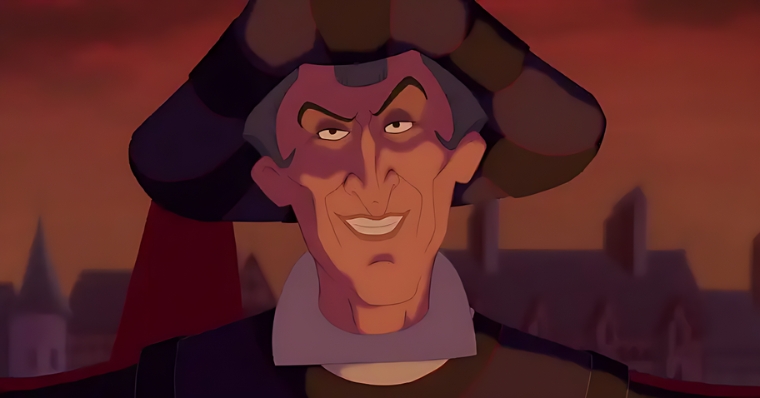
Judge Claude Frollo (The Hunchback of Notre-Dame)
Disney villains usually get a bad rap, but let's be real: a lot of them have their own fan clubs. Ursula, Cruella DeVil, Hades—they've all become cult figures in their own peculiar way, with admirers reveling in their misdeeds and snappy one-liners. But then there's a Disney villain who doesn't just steal the scene; he plunges you into a genuine abyss of discomfort. This guy brings a whole new level of dread because he's not just a garden-variety baddie; he's got that dire blend of religious zeal and societal clout that makes you realize the depth of his menace. We're diving into the complex abyss that is Judge Claude Frollo from "The Hunchback of Notre Dame." Frollo isn't your standard mustache-twirling antagonist. He's a high-ranking member of the Catholic Church, wearing his titles like a suit of armor that shields him from culpability. His role in the story isn't just to create problems; he's judge, jury, and executioner all rolled into one, constructing an atmosphere so stifling that you can practically feel the walls close in just by watching him on screen. Let's not sugarcoat this. Frollo makes life a living hell for Quasimodo, our hunchbacked hero. From his secluded tower to the echoing halls of the cathedral, Quasimodo has no escape from Frollo's twisted sense of duty. It's like the guy has a sixth sense of suffering and a compulsion to magnify it. Now here's where things take an even darker turn: Frollo develops an obsession with Esmeralda, the vibrant, free-spirited Romani woman. And when Frollo obsesses, it's not some innocuous crush; he expects Esmeralda to bend her will to his in a demented quid pro quo that leaves you wondering how deep the roots of his malevolence go. The unsettling part isn't just Frollo's cruelty; it's the way he so skillfully masks it with a veneer of moral integrity. He genuinely believes his actions are righteous, perhaps even divinely ordained. This blending of self-righteousness with his authoritative position in society makes him a triple threat of malevolence. It's like giving a pyromaniac a box of matches and the keys to a fireworks factory. What could possibly go wrong? It's his contradictory nature—this interplay between a callous heart and a righteous facade—that leaves an indelible impression. While other Disney villains may be memorable for their melodramatic flair or their snazzy musical numbers, Frollo gives you something far more to chew on a sobering look at how dogma and authority can twist a person into something unrecognizable. It's a cautionary tale of how easily virtue can slide into vice when cloaked in the trappings of power.
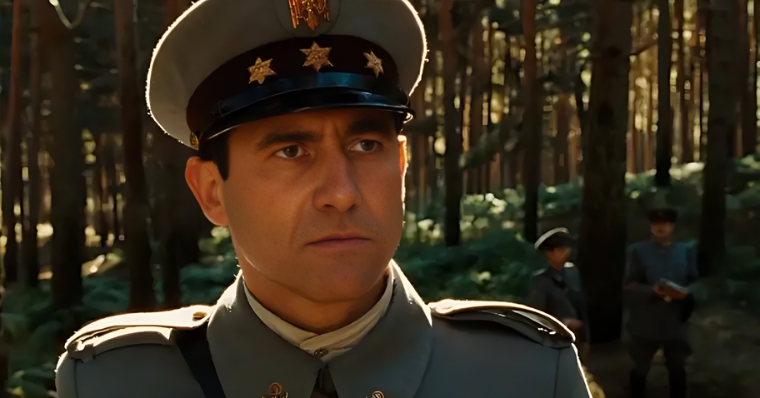
Captain Vidal (Pan's Labyrinth)
Guillermo del Toro has an almost alchemic gift for combining the whimsical elements of fantasy with the grueling harshness of reality. And nowhere does he exercise this gift more potently than in "Pan's Labyrinth," a film where a fairy-tale storyline plays out against the bleak backdrop of Francisco Franco's authoritarian regime in 1940s Spain. It's like del Toro has crafted a chiaroscuro canvas, where the light of imagination butts heads with the darkness of political tyranny. Enter the scene: young Ofelia, who, along with her mother, moves to a new home that just so happens to be a military encampment. You'd think maybe, just maybe, in a place surrounded by the grim vestiges of war, there'd be one person to show a shred of compassion. But nope. Instead, we meet the man in charge, Captain Vidal. This guy isn't just your run-of-the-mill bad apple; he's a cocktail of malice with a twist of bitterness, garnished with a callous disregard for human life. Captain Vidal is an archetype of fascism incarnate—utterly despicable, relentlessly violent, and imbued with a toxicity nurtured by his own insecurities and frustrations. But let's not stop there; the man doubles down on his vileness by being a practiced torturer and a cold-blooded murderer. This is not a guy who dabbles in evil; he practically has a Ph.D. in it. The unsettling part? He's not the slightest bit squeamish about literally getting his hands dirty. If he has to bathe his palms in blood to achieve his ends, consider it a done deal. What del Toro does brilliantly here is not just make Vidal the antagonist but shape him into the embodiment of the horrors of dictatorship. It's like he's holding up a mirror to society and saying, "See this guy? He's what happens when ideology devolves into fanaticism when human empathy gets deleted from the equation." Vidal is almost like the grotesque manifestation of a society gone awry, where compassion is an endangered species, and cruelty is the order of the day. Now, why does this character resonate so profoundly? It's not just because he's terrifying; it's because he's terrifyingly real. He echoes the worst elements of human nature, exposed and magnified by the distortions of an oppressive regime. Vidal serves as a cautionary tale, reminding us how systemic evil can find its expression in individuals willing to serve as its executors. You could say he's the personification of a malevolence that's all too plausible, all too grounded in the realities we'd rather not face but absolutely must if history is not to repeat itself. In essence, Captain Vidal doesn't just serve the plot; he elevates it. He gives weight and gravitas to the nightmarish elements of "Pan's Labyrinth," making us uncomfortably aware that while Ofelia might escape into a fantasy world, for others, the nightmare is inescapable and all too human.
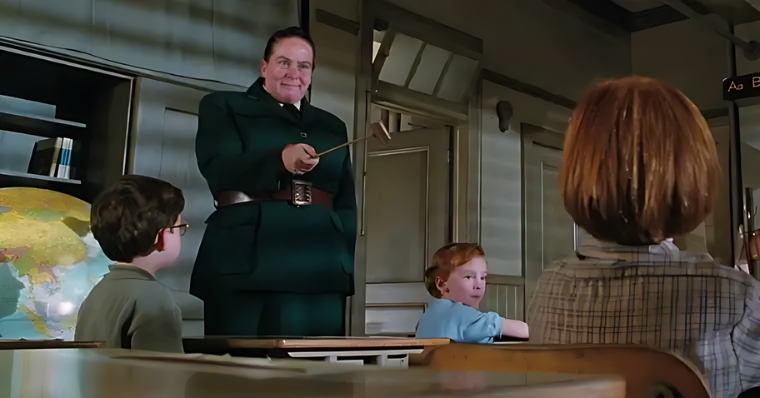
Miss Agatha Trunchbull (Matilda)
Suppose you grew up reading Roald Dahl's work or indulging in cinematic adaptations of his stories. In that case, you're likely well-acquainted with his knack for dreaming up some pretty nefarious characters. Case in point: "Matilda." This heartwarming yet dark classic presents us with the tale of a magically gifted young girl named Matilda, who first navigates the rocky terrain of a family that's anything but nurturing. Think that's where her troubles end? Think again. She then gets shipped off to boarding school, where she encounters an authority figure of an entirely different but equally disturbing caliber—Principal Agatha Trunchbull. Oh, Trunchbull isn't just any school principal. She's the type who could turn your standard, a run-of-the-mill nightmare about failing a test into a full-blown, cinematic horror spectacle. She rules Crunchem Hall Primary School as if it's her personal dictatorship, leading with an iron fist that would make even totalitarian regimes pause for thought. Think her primary job description is educational leadership? Nah. It's more like doling out psychological warfare and terrorizing small children. Now, let's get into the nitty-gritty of her notorious disciplinary tactics. We're not talking mere detentions or timeouts here; Trunchbull's all about sadistic extravagance. Remember the episode with the chocolate cake? She forces an entire school assembly to watch as she makes a kid devour an obscenely large chocolate cake. The message? Cross her, and you won't just face the music—you'll face a whole cruelly orchestrated symphony of humiliation and abuse. And here's what elevates Trunchbull from simply malicious to grotesquely fascinating: She's not just a villain for villainy's sake. Her authoritarian streak seems almost like a twisted inversion of the nurturing we'd expect from an educator. In her malformed worldview, might make right, and the tender souls under her charge are just clay to be violently molded into her idea of 'discipline.' She's the personification of every child's worst fears about authority figures, amplified to almost surreal levels. Is it any wonder, then, that she's become a sort of cultural touchstone for despotic authority run amok? If you had any lingering innocence about the inherent goodness of adults, Trunchbull was there to disabuse you of that notion, quick and fast. She doesn't just serve as an antagonist in "Matilda"; she's a cautionary tale, showcasing the perils of authority divorced from compassion. If ever there were a case study on how not to lead a school—or any institution, for that matter—it's Principal Agatha Trunchbull. So in the annals of iconic villains, Trunchbull occupies her own special chamber of horrors, a dictatorial educator whose infamy continues to be a lesson in what happens when power is wielded not just unwisely but sadistically. And let's face it: anyone who has ever been to school can tell you that Trunchbull is the embodiment of some of our most primal fears, exaggerated into nightmarish reality. A memorable character, yes, but also a haunting reminder of the potential for cruelty lurking in places where only care should exist.

Dolores Umbridge (Harry Potter)
You know, there's something particularly unsettling about people who exude an air of sweetness only to reveal a core of pure, concentrated venom. Case in point: Dolores Umbridge, who sauntered into our lives via the pages of "Harry Potter and the Order of the Phoenix," complete with her prim and proper pastel wardrobe and an unhealthy obsession with feline decorative plates. You see her initially, and you're almost fooled into thinking, "Ah, what a charming old lady." But don't let that kitschy, pink-infused facade lull you into complacency. High-ranking Ministry of Magic employee or not, Umbridge is dispatched to Hogwarts with a very specific mission: to oversee and undermine none other than Albus Dumbledore, the venerated headmaster of the wizarding school. But it doesn't stop there; it never does. She's not just some Ministry puppet or a bureaucrat ticking off boxes. This woman has an agenda, and it's as twisted as the gnarled branches of the Whomping Willow. Now let's talk about her sadistic tendencies, shall we? Dolores is the epitome of cruel and unusual punishment, often opting for methods that leave both physical and emotional scars. Like that sinister quill that engraves messages onto the back of Harry's hand as he writes. That's not discipline; it's flat-out torture, served with a side of pink-bowed malevolence. And guess what? It isn't just the 'Boy Who Lived' and his pals who suffer under her rule. Umbridge's reign of terror extends to the larger student body, the staff, and even the fantastical creatures who dare roam the enchanted grounds of Hogwarts. Just when you think she's reached peak villainy, Umbridge takes it up another notch in the final installment, "Harry Potter and the Deathly Hallows." Here she's not just a rogue educator; she's an active collaborator with the oppressive regime led by Lord Voldemort himself. As if it wasn't clear before, Umbridge reveals her true colors in a haze of dark magic and dark politics. She becomes an integral part of a fascist movement aimed at subjugating non-purebloods, which is pretty much the wizarding equivalent of war crimes. Umbridge is more than just a villain you love to hate; she's a deeply unsettling character study of how someone can wield authority like a blunt instrument, lashing out at those who defy her. But the real kicker? She embodies the banality of evil—she's not some cackling dark witch with overtly malevolent plans. Instead, she's a seemingly ordinary person endowed with extreme prejudice and the power to enact it. In short, Umbridge is the kind of villain you could all too easily imagine existing in the real world, making her perhaps one of the most terrifying characters in the Harry Potter universe. In the broader context of literary evildoers, Dolores Umbridge offers us a sobering lesson: that sometimes the most frightening villains aren't those lurking in dark alleys or sitting atop dark thrones. No, sometimes they're standing right in front of a classroom, dressed in pink, and preaching their gospel of tyranny while hiding behind a mask of insidious decorum.

Bella Swan (Twilight)
The 2000s—a time of low-rise jeans, flip phones, and the cultural explosion of "Twilight," Stephenie Meyer's saga that embedded itself into the zeitgeist like a vampire's fangs into a jugular. Hard to overlook, and even harder to forget, "Twilight" was a love-it-or-hate-it kind of experience. Nestled at the heart of this polarizing tale is Bella Swan, an ostensibly "average" teenager whose life spins wildly off course when she's thrust into a complex, impassioned love triangle with a vampire named Edward Cullen and a werewolf named Jacob Black. Cue the breathless sighs, Team Edward vs. Team Jacob t-shirts, and debates that could split a friendship faster than a vampire could split a log. Now, Bella Swan is no Jane Austen heroine. She's not a femme fatale, a quirky best friend, or a battle-hardened warrior. She's Bella—relatable to some, maddeningly passive to others. Her critics are quick to throw the book at her—sometimes literally. They argue that she's a bit dull, lacking in initiative, or, dare they say, downright foolish, especially when it comes to her blindingly romantic decisions that seem to toe the line of life and death. I mean, let's be real: tossing yourself off a cliff to grab the attention of an emotionally distant vampire might not make the "wise choices" list for most people. But hey, love makes us do weird things, right? However, let's add a bit of nuance to this tale. For those who view her through a lens of annoyance, Bella might seem like a character who's merely acted upon—swayed by supernatural elements, swept away by chiseled jawlines, and ruled by her heart rather than her head. Yet, what these critics may overlook is that Bella's decisions, no matter how perplexing or unsettling, are hers alone. She's choosing to dive headlong into a world fraught with danger and dripping with complexity, and there's something to be said about her agency in that regard. Moreover, while Bella's critics are busy rolling their eyes at her seemingly naïve infatuation, they're glossing over the inescapable fact that "Twilight" was largely aimed at a young audience hungry for otherworldly love tales. An audience that, let's face it, wasn't reading the series for its life lessons but for its escapism, for that intoxicating blend of lust, love, and a sprinkling of life-and-death stakes. Is Bella a paradoxical figure? Absolutely. She's trapped in the liminality of adolescence, navigating a world she never asked to be part of, juggling her humanity against the backdrop of the supernatural. Her choices may not always land her in the annals of great decision-makers, but they certainly land her squarely in the complexities of young love and self-discovery. So, whether Bella Swan makes you swoon or want to toss your book across the room in frustration, there's no denying her role in shaping a definitive period of young adult fiction. By reflecting both the vulnerabilities and the fearless abandon of youthful love, she became a mirror for her audience, fractured though it may be. And while her character may be as divisive as the garlic to her vampire suitors, Bella Swan is etched into the annals of pop culture, for better or for worse.




 Nurse Ratched (One Flew Over the Cuckoo's Nest)
Nurse Ratched (One Flew Over the Cuckoo's Nest)





